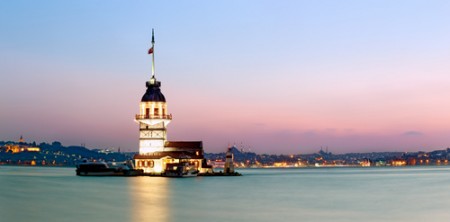By Serkan Oral for National Geographic Society
In the past, people appreciated the importance of the sun only when they were drying tomatoes and eggplants. Vegetables were hung on strings and left to dry under the sun.
The sun in Turkey’s Anatolia region is bringing welfare and prosperity to its people more than ever these days. Solar energy will be the most significant symbol of the new era. There will be more need for energy from the sun as a result of the natural decline of fossil fuels.

If we take into consideration the pollution caused by the fossil fuels, there is actually an immediate need for the sun to shine more brightly on Anatolia. After all, the solar energy that lights our world is 160 times more powerful and cleaner than fossil fuels.
Turkey has a high potential for solar energy for 110 days a year. Turkey is surrounded by neighbors such as Iran and Russia, who have rich natural reserves, electricity producers such as Bulgaria and Romania, and the energy and oil corridors of Iraq and Syria.
There is abundant solar energy in Turkey’s southeastern Anatolian region and the Mediterranean region. However, there is not enough use of this resource. Forced to rely on old but efficient fossil fuel energy sources, Turkey should take quicker steps toward harnessing solar energy.
Will this transformation of the strong sunlight of Anatolia into money reflect the Zeybek dance? The Zeybek is a folkloric dance in Turkey, during which the dancers mimic the movements of a hawk. It reflects the noble and courageous aspects of the Turkish character. The partners are dancing independently, free from one another. The bravery of the Turk, even when alone, is reflected in the music and the dance. The players in the dance are heroes on their own. The hawk’s standing posture, with open wings on the sides, is a symbol of this feature.
Turkey, which is in the middle of the energy corridor from the Caucasus to the Balkans, from Russia to Europe, must take renewable energy under its own wings, like the Zeybek dance. By returning to its own individual character, Turkey can set up the mechanisms to implement solar energy, despite the chaos with its neighbors in the region. However, looking at the facts in 2011, this goal is only a good wish at this point.
According to reports (PDF, in Turkish) by Mr. Kamil Varinca and Mr. Talha Gonullu at the Istanbul Yildiz Technical University Environmental Engineering Department, “Turkey is in very good condition in terms of solar energy. Unfortunately, it cannot use this potential in an active and a widespread way. The lack of coordination between the institutions of the state, and the government’s not applying an incentive on this issue until now, are the main causes.”
This clean energy, which has a history of 30 years of research and development, must move to the top of the agenda for the Turkish government. Already, solar panels in the Mediterranean and the Aegean regions are used to provide hot water in houses, hotels and factories. It is good news that the Turkish people are aware of this energy, independent of daily politics or governmental action.
According to Ms. Birsen Alacakir, who is researching the potential of solar energy for the Ankara General Directorate of Electrical Power, producers and consumers should be encouraged to use it with government incentives and regulations. She added that solar cells should be more in use like in some other countries.
A road map for Turkey’s future energy plans, set out in 2004 and supported by the State Planning Organization and The Ministry of Energy and Natural Resources, has been a good start for mobilizing Turkey’s renewable energy sources.
Turkey has demonstrated a will to meet energy demand: Drilling for oil in the Mediterranean and Black Seas, efforts to build a nuclear power plant, and increasing imports of natural gas from Azerbaijan are examples of that will.
But, when it comes to clean solar energy, we still are not seeing the Turkish Zeybek dance …
![]() Editor’s Note: This column comes to us as a cross post courtesy of the National Geographic Great Energy Challenge blog. Author credit for the post goes to Serkan Oral.
Editor’s Note: This column comes to us as a cross post courtesy of the National Geographic Great Energy Challenge blog. Author credit for the post goes to Serkan Oral.